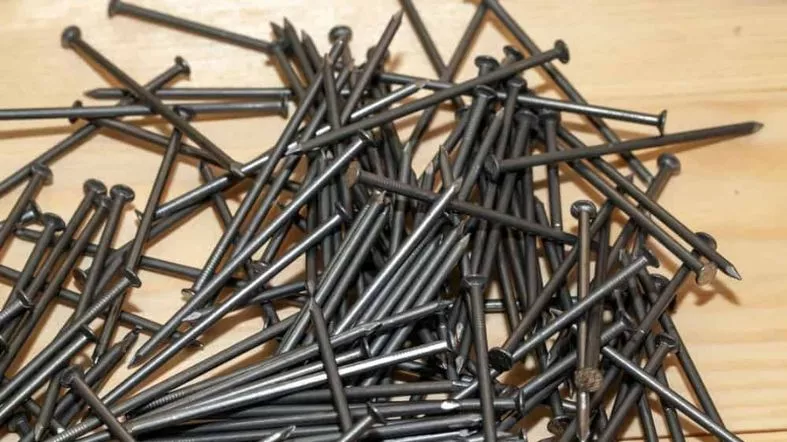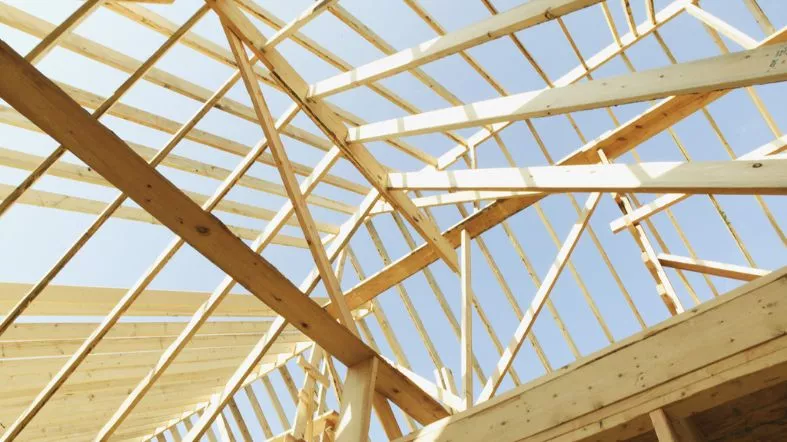Embarking on a framing project and stumped on what size nails for 2×4 framing? Your nail choice can make or break the structural integrity of your build.
Fear not, as this guide will demystify the ins and outs of selecting the perfect nails for 2×4 framing. Read on to make your framing nail project a breeze.

What Size Nails for 2×4 Framing?
For 2×4 framing, the most commonly used nail size is a 16d (16 penny) nail, which is 3 1/2 inches long. Another option is a 10d nail, which is 3 inches long. These nails are typically used to connect 2x4s to other 2x4s or to other structures.
Here is a quick table:
| Nail Size | Length (inches) | Best Used For |
|---|---|---|
| 16d | 3 1/2 | General framing, especially for wall studs |
| 10d | 3 | Framing smaller structures like braces |
| 8d | 2 1/2 | Framing where shorter nails are needed |
| 6d | 2 | Small construction tasks |
Types of Nails Used in 2×4 Framing
Common Nails
Common nails are the workhorses of construction. They’re like the reliable old truck that gets the job done.
With a thick shank and a large head, they provide strong holding power. Imagine building a treehouse; common nails would be your go-to choice.
They’re sturdy and can handle the weight, making your treehouse safe and secure.
Box Nails
Box nails are the more delicate cousins of common nails. They have a thinner shank which makes them less likely to split the wood.
Think of a birdhouse project. You wouldn’t want to split those thin pieces of wood, right? That’s where box nails come in handy!
Ring Shank Nails
Ring shank nails are like the mountain climbers of nails. Their rings act like little boots that grip into the wood, giving them extra holding power.
If you’re building something in an area with high winds, like a wind chime or a weather vane, ring shank nails will ensure it stays put.
Screw Shank Nails
Screw-shank nails are the superheroes of the nail world. Their superpower is their twisted shank, which provides even more holding power than ring shank nails.
They’re often used in flooring applications where you really need that extra hold.
Other Specialty Nails
Just like every superhero team has its unique members, there are many other types of nails, each with its own specific use.
For example, there are roofing nails with large, flat heads for holding down shingles, and masonry nails for attaching wood to concrete or masonry. Always choose the nail that best fits your project’s needs.
Why Nail Size Matters in 2×4 Framing?
Structural Integrity
Choosing the right nail size is like picking the right foundation for a house. If the nails are too small, they might not hold the framing together, just like a weak foundation can’t support a house.
On the other hand, if the nails are too large, they could split the wood, similar to how an oversized foundation can cause structural problems.
Longevity of the Project
The correct nail size also affects how long your structure lasts. Imagine building a sandcastle with a tiny shovel; it might not hold up over time.
Similarly, nails that are too short may not keep your structure together in the long run, leading to structural failure.
Safety Concerns
Safety is paramount in any construction project. Incorrect nail size can lead to safety issues.
For example, nails that are too long could poke through the other side of the wood, creating a hazard. It’s like wearing shoes that are too big; you could trip and fall!
Meeting Building Codes
Most areas have building codes, which are like rules for building safely and correctly. These codes often specify what size and type of nail to use for different projects.
Using the correct nail size helps ensure your project meets these codes, just like following a recipe ensures your cake turns out right.
How to Choose the Right Nail Size for Your Project

Consider the Material of the Wood
The type of wood you’re working with plays a big role in choosing the right nail size. Harder woods, like oak or maple, may require shorter or thinner nails to avoid splitting the wood.
On the other hand, softer woods, like pine or cedar, can accommodate longer or thicker nails.
Weight and Load of the Structure
The weight and load of your structure also influence your nail choice. Heavier structures, like a big bookshelf or a deck, require longer, thicker nails to ensure they stay together under load.
Environmental Factors
If your project will be exposed to harsh weather or high humidity, consider using galvanized or stainless steel nails for added durability. These nails are like the all-weather tires of the construction world.
Local Building Regulations
Just like how you need to follow the rules when playing a board game, you also need to follow local building codes when starting a project. These codes often specify what size and type of nail you should use.
Factors Influencing Nail Size Selection for 2×4 Framing
Nail Length and Diameter
The length and diameter of a nail can affect its holding power and suitability for certain tasks. Think of it like choosing the right size of screwdriver for a screw.
Wood Grain and Density
Harder woods may require shorter or thinner nails to avoid splitting. It’s like trying to push a thick stick into a hard piece of clay.
Type of Framing (Wall, Roof, Floor)
Different types of framing may require different sizes or types of nails. For example, you might need longer nails for wall framing than for floor framing.
Load-Bearing Requirements
Heavier structures require longer, thicker nails. Imagine trying to hold up a heavy picture frame with a tiny pin.
Climate and Weather Resistance
If your project will be exposed to harsh weather or high humidity, consider using galvanized or stainless steel nails. These nails can handle tough conditions without rusting or corroding.
Local Building Codes and Standards
Always check your local building codes before starting a project. These codes often specify what size and type of nail you should use.
Cost Considerations
While it’s important to choose the right nail for your project, cost can also be a factor. It’s like shopping for groceries; you need to keep your budget in mind.
Common Mistakes to Avoid When Choosing Nails for 2×4 Framing

Using the Wrong Type of Nail
Always use the right type of nail for your project. It’s like using a butter knife instead of a screwdriver. For example, don’t use box nails when you need the strength of common nails.
Ignoring Local Building Codes
Always check your local building codes before starting a project. It’s like trying to play a board game without knowing the rules. You wouldn’t want to finish your project only to find out it doesn’t meet the standards!
Not Considering Environmental Conditions
If your project will be exposed to harsh weather or high humidity, consider using galvanized or stainless steel nails.
It’s like wearing a raincoat on a sunny day. These nails can resist rust and corrosion, making your project last longer.
Overlooking the Importance of Proper Tools
Always use the right tools for the job. Trying to hammer a nail with a wrench? That’s a recipe for disaster! Make sure you have a good hammer or nail gun, and always wear safety gear.
FAQs
Can I use box nails for 2×4 framing?
Box nails are not recommended for 2×4 framing due to their thinner shank, which provides less holding power for structural tasks.
Is it okay to use ring shank nails for general 2×4 framing?
Ring shank nails provide extra holding power and can be used for 2×4 framing, especially in areas with high winds.
Are 6d nails suitable for 2×4 framing?
6D nails are generally too short and not ideal for 2×4 framing, which typically requires 16D or 10D nails for optimal strength.
Does wood type affect nail choice?
Yes, the type of wood you’re working with, such as hard or soft wood, influences the length and thickness of the nails you should use.
Are galvanized nails better for outdoor framing projects?
Galvanized or stainless steel nails are recommended for outdoor projects as they offer better resistance to rust and corrosion.
Conclusion
Choosing the right nails for 2×4 framing is crucial for the success of your construction project.
By considering factors like the type of wood, the weight of the structure, and local building codes, you can ensure that your project is built to last.
Remember, safety first! Always wear appropriate safety gear when working on construction projects. Happy building!
